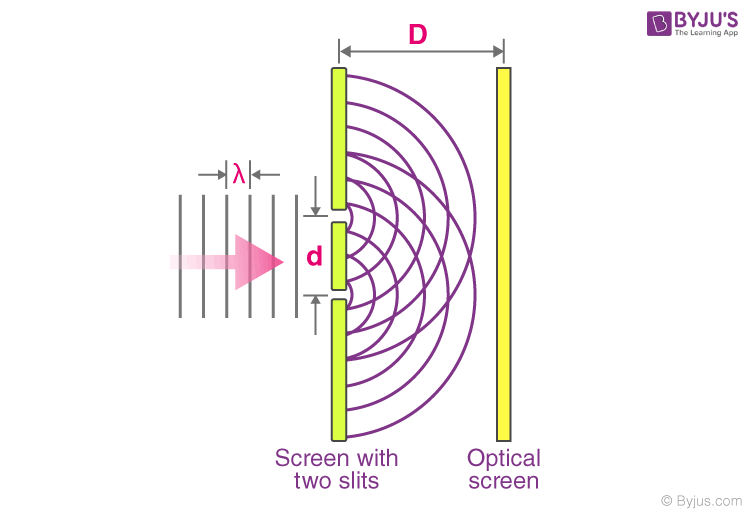Describe Young's Double Slit Experiment
In 1801 an English physicist named Thomas Young performed an experiment that strongly inferred the wave-like nature of light. Youngs double-slit experiment was however regarded highly controversial and counterintuitive in his own time.

Describe Young S Double Slit Experiment With A Neat Diagram Showing Points Of Maximum And Minimum Intensity Physics Shaalaa Com
S3P-2-15 Describe light as an electromagnetic wave.
. The 8th interference minimum is. The plane wavefront can be either obtained by placing a linear source S far away from the screen or by placing it at the focus of a convex lens kept close to AB. For modern experiments people mainly use lasers as.
Describe the combined effect of interference and diffraction with two slits each with finite width. Delhi 2017 Chapter 11. Identify missing orders if any.
Because he believed that light was composed of waves Young reasoned that some type of interaction would occur when two light waves met. It used a single source of light diffraction and transmitted the same into two other additional slits for use as a coherent source. This will greatly reduce the intensity of the fifth maximum.
Dual Nature of Radiation and Matter 1. When we studied interference in Youngs double-slit experiment we ignored the diffraction effect in each slit. The notion of path difference and constructive or destructive interference used above for the double-slit experiment applies as well to the display of a single slit of light intercepted on a screen.
Youngs double-slit experiment is performed with 620-nm light and a distance of 100 m between the slits and the screen. Determine the relative intensities of interference fringes within a diffraction pattern. Youngs Double Slit Experiment Dielectrics Types of Diffraction Total Internal Reflection Faradays law of Electrolysis Spherical Mirror Electrolysis Snells Law Scattering Refractive Index Refraction Reflection Real and Virtual images Polarization Mirages Interference of Light.
A plane wavefront is made to fall on an opaque screen AB having two similar narrow slits S 1 and S 2. S3P-2-16 Discuss Einsteins explanation of the photoelectric effect qualitatively. A double slit produces a diffraction pattern that is a combination of single- and double-slit interference.
S3P-2-14 Perform Youngs experiment for double-slit diffraction of light to calculate the wavelength of light. S3P-2-17 Evaluate the particle and wave models of light and outline the currently. Youngs double-slit experiment made not one but two appearances on this prestigious listat number 1 was the double-slit experiment applied to the interference of electrons and at number 5 was the original experiment by Young.
The main result of this interference is to spread out the light from the narrow slit into a broader image on the screen. Find the angular width of the central maximum obtained on the screen. Youngs double-slit experiment is used to describe the interference fringes of light.
Thomas Youngs Double Slit Experiment. Find the ratio of the width of the slits to the separation between them if the first minimum of the single-slit pattern falls on the fifth maximum of the double-slit pattern. Description of Youngs double-slit interference experiment.
Estimate the number of fringes obtained in Youngs double slit experiment with fringe width 05 mm which can be accommodated within the region of total angular spread of the central maximum due to single slit.

Young S Double Slit Experiment Definition Examples Diagrams
Briefly Describe The Young S Double Slit Experiment Of Interferenceof Light Drive The Expression For Fringe Width In The Pattern Snapsolve

Young S Double Slit Experiment Properties Position Of Fringes In Ydse
No comments for "Describe Young's Double Slit Experiment"
Post a Comment